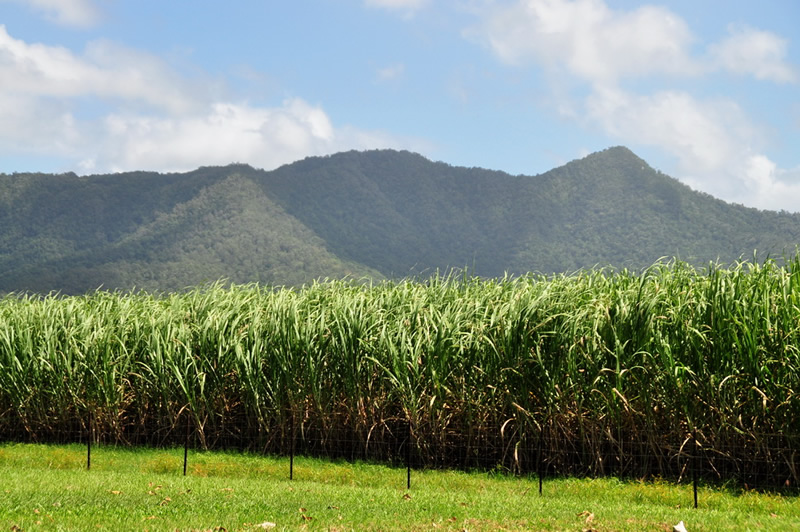 |
| Australian Agriculture |
Agriculture is an important part of Australia’s economy. Australia’s exports were overwhelmingly agricultural products until the 1960’s, when mining and manufacturing grew in importance.
Agriculture occupies 60 percent of the land area of Australia, but much of this is used for open-range cattle grazing, especially in huge areas of the states of Queensland and Western Australia. Only 5 percent of Australia’s agricultural land is used for growing crops.
Western Australia and New South Wales have the largest areas of cropland. The limited area suitable for growing commercial crops is limited mainly by climate, because Australia is the world’s driest continent.
Annual rainfall of about 20 inches (500 millimeters) is necessary to grow crops successfully without irrigation; less than half of Australia receives this amount, and the rainfall is often variable or unreliable.
  |
Years of drought may be followed by severe flooding. High temperatures throughout most of Australia also mean high evaporation rates, so rainfall figures alone are not a good guide to the feasibility of agriculture.
Australian soils usually require the application of fertilizer to grow crops successfully. The east coast of Australia is suitable for growing sugarcane, while the cooler southern parts are suited to growing wheat.
Irrigation has opened up large areas of drier land to agriculture, especially for growing fruit, but salinization (the buildup of salt in the soil) has become a major problem in some areas, especially near the mouth of the Murray River. Major agricultural plant exports from Australia are wheat and sugar. Other important agricultural exports are fruits, cotton, rice, and flowers.
Wheat
 |
| Australian wheat field |
Long the most important crop of Australia, wheat is produced in the Wheat Belt, a crescent of land just west of the Eastern Highlands, or Great Dividing Range, which extends from central Queensland through New South Wales to Victoria, as well as in the south of South Australia and southwest Western Australia.
More than 120,000 farms in Australia grow grains, and wheat is the principal crop on some 25,000 farms. The average Australian wheat farm is family-owned and has an area of 3,700 acres (1,500 hectares). Crops are rotated, usually because of low soil fertility.
Australian wheat is planted during the winter, which is much milder than winter on the prairies of North America. Harvesting begins in September in the warm state of Queensland and moves south to Victoria and Western Australia by January.
Australian wheat is high in quality and low in moisture, so it is easy to mill. Wheat crops are frequently affected by drought; another problem is Australia’s markets, because the nation competes with the United States in wheat export.
When the British first came to Australia, convicts planted wheat on a government farm in what is now inner Sydney. They had difficulty growing wheat because of poor soils, unfamiliar climate, and inexperience, causing fear of widespread hunger.
As settlement spread beyond the coastal plain and into the interior, wheat production rose dramatically. The rapid increase in population after the gold discoveries of the 1850’s also led to increased demand for wheat. Australia began exporting wheat in 1845 and is now the world’s fourth-largest exporter of wheat.
Sugar
 |
| Sugarcane field in Queensland, Australia |
Sugarcane is grown in a series of small regions along the tropical coast of Queensland, extending slightly across the border into northern New South Wales. A warm, wet climate is required for successful cultivation of sugarcane, so it is confined to parts of the coastal plain with good, deep soils and reliable rainfall.
Australia is the world’s third-largest exporter of sugar. Sugar is grown on more than six thousand small, individually owned farms. Until the 1960’s, cane was cut by hand. Now it is harvested mechanically and taken by light rail to a nearby mill. There are twenty-five mills in Queensland and three in New South Wales.
Fruit
Fruit growing has a long history in Australia and is strongly influenced by climatic considerations. In Queensland, tropical fruits such as bananas, pineapples, mangoes, and papaya (called paw paw in Australia) are cultivated. In the cooler south, apples, peaches, apricots, cherries, and grapes are grown.
Grapes are grown for eating and are dried as raisins, but more important is wine production, especially in the BarossaValley (South Australia), Hunter Valley (New South Wales), Margaret River area (Western Australia), and the Murrumbidgee Irrigation Area and Riverina.
John Mac arthur, the founder of the Australian wool industry, established the first commercial vineyard, in New South Wales. Later European settlers planted vineyards in Victoria and South Australia.
In the 1960’smodern plantings and production methods were introduced. Australia has 242,060 acres (98,000 hectares) of vineyards and more than one thousand wineries. Wine is an important export for Australia, with the European Union purchasing 60 percent of wine exported.
Other Agricultural Products
Cotton is grown in drier interior parts of northern New South Wales and in part of central Queensland. Cotton is usually grown in conjunction with sheep farming, on family farms. Indonesia is the major customer for Australian cotton. Rice has been grown commercially in Australia since 1924, using irrigation.
New South Wales is the main producer, where the Murrumbidgee Irrigation Area dominates rice production. Australia exports most of its rice crop and in 1999was theworld’s eighth-largest exporter of rice.
Oats are grown where the climate is too cool and too moist for wheat. In Australia, this is in the interior southeast with a small area in Western Australia. This state and New South Wales are the biggest producers of oats, which is used mainly for livestock fodder.
Other agricultural products of Australia include barley; grain sorghum; corn, called maize in Australia; vegetables, including potatoes, peas, tomatoes, and beans; oil seeds such as sunflower; soybeans; and tea and coffee in northern Queensland.
Australia is a major producer of honey, with more than eight hundred commercial apiarists. Blossoms of the eucalyptus tree produce distinctive-tasting honey, which is sold mainly to European Union countries.